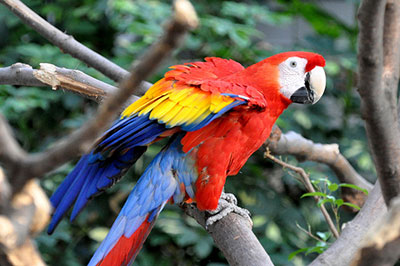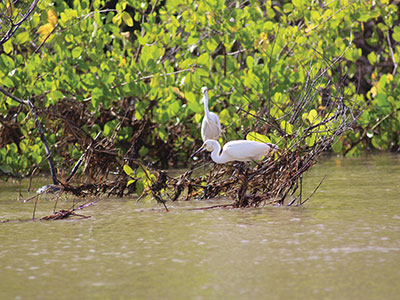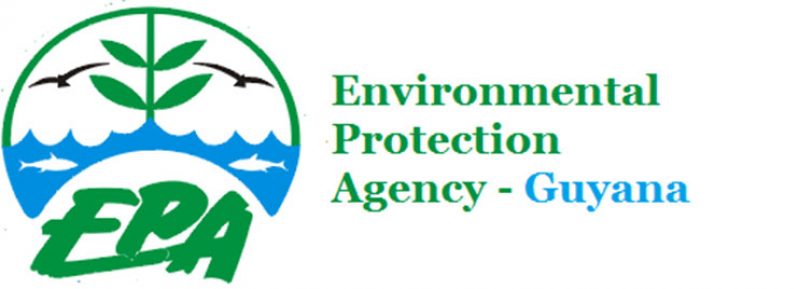“I’m very concerned for the future of the earth and its amazing creatures. We’ve got to be careful and make sure we don’t foul our own nest.” – John Lithgow
GUYANA joined many other countries around the world in celebrating the International Day for Biological Diversity on May 22, 2020. With that, you would have probably read a lot about species and ecosystems diversity and how some of the world’s biodiversity has had to be protected because of irresponsible human actions. But what do these terms really mean and what should you know about them? 
- Species – a group of organisms capable of interbreeding and producing fertile offspring of both genders and separated from other such groups with which interbreeding does not (normally) happen.
- Ecosystem diversity – is the variety of ecosystems in a community of living organisms interacting with each other and their surroundings, e.g., forest, ponds, savannahs, marshes, etc.
- Species diversity – this variety is the basis for distinguishing organisms into different groups, e.g., humans, insects, cats, dogs, fishes, palms, mangroves, etc. Species diversity plays a pivotal role in making life on earth expansive, captivating and unique. Although biologists are not really sure how many species live on earth, they have agreed that it is an astronomical number since the estimates range from about 2 million -100 million.
- Genetic diversity – within each species there is a genetic variability causing each organism from the same group to be different. One example of diversity within species is dogs; dogs are a single species but there are many different “breeds” of dogs. The same applies for members of a family for example, you may have inherited similar genes but everyone has their unique features.
Factors affecting biodiversity
- Extinction
According to scientists, since the beginning of the Industrial Revolution when man began to use a lot of machinery to make work easier, a large number of species have become extinct. And, according to research, human actions have accelerated the rate of extinction between 1,000 – 10,000 times faster than natural extinction.Habitat loss, degradation and fragmentation
A rapidly increasing human population and the quest for wealth have been causing significant degradation of the world’s ecosystems. Since the habitat and food are specific to the species, such disruption has affected species’ productivity due to factors such as food shortage, increase in predators, etc.
- Invasive Alien Species
This is a very important cause of extinction which is usually overlooked. However, invasive alien species can invade an ecosystem and out-compete the native species, thereby forcing them out. It’s basically like a foreign species coming into an environment and adapting so well that they force the native species out.Pollution
This is another factor which poses serious threats to species since many species are habitat and food-specific. Contaminants can alter the habitats and food supplies of species, thereby affecting their productivity and survival. Plastic pollution, especially single-use plastics have been very detrimental to our biodiversity, hence, the call to eliminate single-use plastics from our environment. - Climate Change
This is a single indispensable factor which threatens species and ecosystems. The distribution of many species is largely determined by climate. In addition, many species of birds and marine turtles are migratory. The change in climate will shift this distribution and affect the productivity of species, since climate can become relatively unpredictable and difficult to forecast. Further, changes in climate will cause changes in ecosystems and ultimately habitats, hence many species will be unable to adapt to these changes in conditions, thereby accelerating the rate of extinction.
As a result of the issues of habitat loss and degradation of the environment due to pollution, deforestation and more direct threats such as overhunting and trapping, many species are becoming endangered. Endangered species, such as the Harpy Eagle, Giant Anteater and Jaguar which are all found here in Guyana, are at an overall low in population size in the world today. As a result, if existing populations are not monitored through conservation efforts, they may soon be added to the list of extinct species.
As such, the work done in Guyana over the past years has been especially vital in conserving our wild flora and fauna. Some of the actions that have been implemented include:
1. Development of a National Biodiversity Strategy and Action Plan;
2. Development of a National Biosafety Bill and Regulations;
3. Establishment of National Agricultural Research and Extension Institute (NAREI) as the National Biosafety Lab;
4. Development of the Wildlife Conservation and Management Act;
5. Regulations on access to genetic resources and benefit-sharing;
6. Establishment of protected areas; and
7. Training workshops, community projects and awareness programmes on addressing biodiversity issues.
As we continue to celebrate our achievements in biodiversity conservation, we call for the continued support of relevant Agencies and you, the general public, to ensure our natural wealth is preserved, since we all benefit from the goods and services biodiversity provides.
Please follow us on Facebook and Instagram for our World Environment Day activities to learn more about biodiversity and what you can do to help.
Participate in our video challenge which ends on June 05, 2020, to showcase your backyard biodiversity and win fabulous prizes. Check out our Facebook and Instagram pages for more details.
You can share your ideas and questions by sending letters to: The Environmental Protection Agency, C/O Communications Department, Ganges Street, Sophia, GEORGETOWN, or email us at: eit.epaguyana@gmail.com or follow us on Facebook, Instagram and YouTube.



.jpg)








